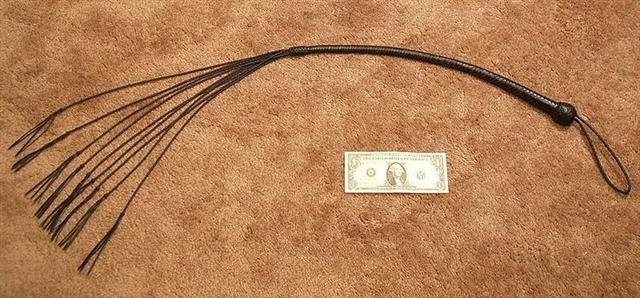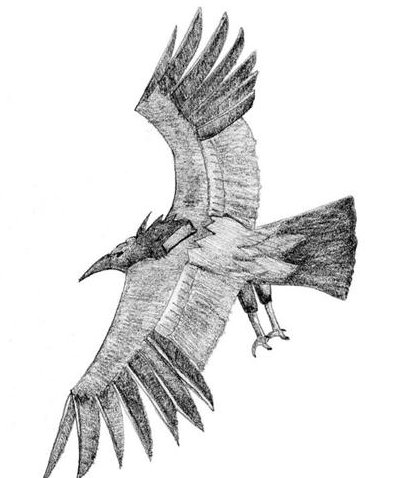Bb7.5
We can count the distance between the pair of oka
lines as 24° + 26° = 50°:
Oka. 1.
Lever, pole; to dig holes in the ground with a sharpened
stick, as was done in ancient times to plant vegetables;
used generally in the meaning of making plantations. 2.
The four sideways poles supporting a hare paega.
Okaoka, to jab, to pierce, to prick repeatedly.
Vanaga. Digging stick, stake, joist; to prick, to
pierce, to stick a thing into, to drive into, to
slaughter, to assassinate; kona oka kai,
plantation; pahu oka, a drawer. Okaoka, a
fork, to prick, to dig. Okahia, to prick.
Churchill.

The band covering the
fixed
navigation stars between the tropics of Cancer
and Capricorn might therefore have been measured as
50° (= 364 - 314). This
can be contrasted with my estimate 84° (= 364 - 280)
counted from the position of the Caracal (Alamak).

The Grape Gatherer
(Vindemiatrix) is the star at the right hand of
Virgo, pointing towards the north. Its location corresponded to day 670 as in the number
of glyphs on side a of
the A (Tahua) tablet. And a quick look at
the end of its
side a reveals glyph number 665 could correspond
to Bb7-5 (because of the vertical gap):
|
 |
 |
|
665 |
669 |
There were 4 days between the culmination
(at 21h) of Regulus (the Little King)
and the corresponding culmination of the
Lucky King (Sadalmelik) half a year
away at Spica at the left hand of
Virgo. April 6 (96) + 4 + 182 = 282 (October
9)..
 |
 |
 |
|
Bb7-4 (13 * 19) |
Bb7-5 (248) |
Bb7-6 (670 = 664 + 6) |
|
ki te maro -
ku hokohuki ia - ki te tagata |
mai tae oho
atu ki te rima - o to haga mama ia -
ku hakatepe ia |
ki to maitaki |
|
Atu. Particle
of meaning opposite to that of
mai; it refers to the second or
third person, expressing movement
away: ka-avai-atu, give it to
him: he-oho-atu au, I am
going there, after you;
i-oho-atu-era, when I had gone
there. Vanaga. 1. a. Directive, of
motion from the speaker. b. Somewhat
expressive of the comparative
degree. 2. Pupil; hakaatu,
proof; hare hakaatuga,
schoolhouse, class. 3. (hakaatu),
to presage. 4. (hakaatu),
mark, object. Churchill.
Mama. 1. To chew. 2. To
mouth-feed (arch.) he-mama i te
vai tôa koia ko te tiapito kiroto ki
te haha o te poki, she
mouth-feeds the child with sugarcane
juice together with tiapito
juice. 3. A sea mollusc (with an
eight-horned shell). Vanaga. 1. To
leak, to ooze, (maamaa). P
Pau., Mgv., Ta.: mama, id. 2.
To chew. P Mgv., Mq., Ta.: mama,
id. 3. Light not heavy, (maamaa).
P Mgv., Ta.: mama, id. 4. A
limpet (Chiton magnificus).
Mgv., Mq., mama, a shellfish.
5. To open the mouth; hakamama,
to yawn, to gape, to be ajar. Pau.:
hamama, to open. Mgv.:
akamama, to burst open. Ta.:
haamama, to open. Mq.:
haámama, to open the mouth. 6.
Ta.: mama-orero, conclusion
of a council. Ha.: mama, to
finish, to have done with a thing.
Churchill. Kahu.
Clothing, dress, habit, cloth,
curtain, vestment, veil, shirt,
sheet; kahu hakaviri, shroud;
kahu nui, gown; rima o te
kahu, sleeve; kahu rahirahi,
muslin; hare kahi, tent;
horega kahu, shirt;
hakarivariva ki te kahu, toilet;
rakai ki te kahu, toilet;
patu ki te kahu, to undress;
kahu oruga, royal sail; kahu
hakatepetepe, jib; kahu nui,
foresail; hakatopa ki te kahu,
to set sail; (hecki keho,
canvas T.) P Pau.: kahu,
dress, garment, native cloth. Mgv.:
kahu, cloth, stuff, garment,
clothing. Mq.: kahu, habit,
vestment, stuff, tunic. Ta.: ahu,
cloth in general, vestment, mantle.
Chuchill. |
|
HELIACAL STARS: |
|
April 2 |
3
(29 + 64) |
4 (459) |
|
JAN 28 |
29 (13 + 16) |
|
|
CIH (Whip)
= γ Cassiopeiae, λ Tucanae (12.4), φ³ Ceti (12.6), μ Andromedae (12.8)
*336.0 = *12.4 - *41.4 = 4 * 84 |
φ4 Ceti (13.2) |
No star listed (14) |
 |
|
RIGHT
ASCENSION DAYS AT THE FULL MOON: |
|
Oct 1 (640 - 366) |
2
(275 = 93 + 182) |
3 |
|
JULY 29 (210 = 179 + 31) |
30 |
31 (29 + 183) |
|
κ
Crucis (194.4),
ψ
Virginis (194.5),
μ
Crucis,
λ
Crucis (194.6),
ALIOTH (Fat Tail) =
ε
Ursae Majoris,
ι
Oct.
(194.8)
*153.0 = *194.4 - *41.4 = 17 * 9 |
MIN-EL-AUVA
(Door of the Barker) =
δ
Virginis
(195.1),
COR CAROLI =
α
Canum Ven.
(195.3) |
δ
Muscae (196.5) ,
VINDEMIATRIX (Grape Gatherer) =
ε
Virginis
(196.8) |

... The medieval names Auva, Al
Awwa, and Minelauva are from the Arabic, meaning
'barking (dog)'. This star, along with β Vir (Zavijava),
γ Vir (Porrima), η Vir (Zaniah) and ε
Vir (Vindemiatrix), were Al
Awwā, the Barker. On Euphrates it was Lu Lim,
the Gazelle, Goat, or Stag, - or perhaps King; and,
with ε, probably
Mas-tab-ba,
another of the seven pairs of Twin-stars of that
country. The
Hindus called it Āpa,
or Āpas,
the Waters; and the Chinese, Tsze Seang,
the Second Minister of State ...
|
Here (at the culmination of Regulus) there were 3 empty hands (possibly indicating
the 3
nights when only cold food was served):
 |
 |
 |
|
Bb7-7 (250) |
Bb7-8 |
Bb7-9 (673) |
| ko agaagata hagu
atu ki te tokerau |
|
Hagu. 1. Breath,
respiration, air. He haro i te hagu a
roto, to draw in air, to breathe. He
hakaea mai te hagu, to breathe. 2.
Figuratively: sustenance, snack. He gau i
te hagu, to eat something. He tuha te
kai mo te hagu o te tagata, the food was
shared for the men's sustenance. 3.
Figuratively: hagu gatu, a great
need, a pressing desire, such as when you
hold your breath in expectation. He gatu
te hagu, to have a great desire of
something (lit. breath is held). He gatu
hau o te tagata ki te miro ki te tu'u mai
(or: mo te tu'u mai o te miro),
the people's great desire for a boat to
come. Te matu'a e gatu ró mai te hagu ki
taana poki ana oho ki te tahi kaíga, a
father feels a great desire to see his son
again when he leaves for another country. 4.
Strength. Te hagu o te rima, the
strength of the hands. Haguhagu, to
pant. Hagupotu, last born; also used
as a term of endearment to a young person:
e hagupotu ê, ducky. Vanaga. 1. The
temples. 2. (agu). Haguhagu,
convulsion, spasm, convulsive. Hagupotu,
younger son, younger brother. Churchill.
Atu. Particle of
meaning opposite to that of mai; it
refers to the second or third person,
expressing movement away: ka-avai-atu,
give it to him: he-oho-atu au, I
am going there, after you; i-oho-atu-era,
when I had gone there. Vanaga. 1. a.
Directive, of motion from the speaker. b.
Somewhat expressive of the comparative
degree. 2. Pupil; hakaatu, proof;
hare hakaatuga, schoolhouse, class. 3. (hakaatu),
to presage. 4. (hakaatu), mark,
object. Churchill.
... e-tahataha-á te vaka
o te tokerau. the boat rocks from side
to side because of the wind ... ku-pa'e-á
te vaka i te tokerau, the wind has made
the boat deviate from its course ...
he-tá e te tokerau i te maga miro, the
wind shakes the branches of the trees ...
he-uéué te kahu i te tokerau, the
clothes flutter in the wind ... |
|
April 5 |
6 (96 = 214 - 4 * 29½) |
7 |
|
... In
China, every year about the beginning of
April, certain officials called Sz'hüen
used of old to go about the country armed
with wooden clappers. Their business was to
summon the people and command them to put
out every fire. This was the beginning of
the season called Han-shih-tsieh, or
'eating of cold food'. For three days all
household fires remained extinct as a
preparation for the solemn renewal of the
fire, which took place on the fifth or sixth
day after the winter solstice [Sic!]
... |
|
1h
(15.2)
β Phoenicis (15.1), υ Phoenicis, ι Tucanae
(15.6), η Ceti, ζ Phoenicis (15.7) |
Al Batn Al Hūt-26
(Belly of the Fish) /
Revati-28
(Prosperous) /
1-iku (Field
Measure)
MIRACH (Girdle) =
β
Andromedae,
KEUN MAN MUN (Camp's South Gate) =
φ
Andromedae
(16.0),
ANUNITUM =
τ
Piscium
(16.5),
REVATI (Abundant) =
ζ
Piscium
(16.9)
REGULUS
(α Leonis) |
ν
Phoenicis (17.4), κ Tucanae (17.6)
*159.0 + *182.0 = 341.0 |
 |
|
RIGHT
ASCENSION DAYS AT THE FULL MOON: |
|
(213 = 197 + 80 - 64 = 197 + 16) |
AUG 2 (214) |
3 (215) |
|
13h (197.8)
ξ¹
Centauri (197.1), ξ² Centauri (197.9) |
APAMI-ATSA (Child of Waters) =
θ
Virginis,
ψ
Hydrae (198.5),
DIADEM =
α
Com. Ber.
(198.9) |
AL DAFĪRAH
(Tuft) = β
Com. Ber. (199.4)
*158.0 = *199.4 - *41.4 |
 |
A Whip could be used in order to create
a Crack (as when something suddenly breaks -
like the cloak of night at Daybreak or the
Burst of Thunder at the beginning of rain),
the sudden sound of which would startle the
Horse forward.
 |
 |
 |
 |
 |
 |
 |
|
Bb7-10 (674) |
(248 + 6) |
Bb7-12 (255) |
Bb7-13 |
Bb7-14 |
Bb7-15 |
Bb7-16 (680) |
|
kua moe atu te
manu |
ki raro o tona
manu punua |
kua vero koia |
kua moe koia |
i te eve o te
manu |
ko te tagata
oho ia |
ka oho oia |
|
Punua, burst of thunder.
Nua. 1. Mother; this
seems a more ancient word than matu'a poreko. 2. Blanket,
clothing, cape formerly made from fibres of the mahute tree.
Vanaga. Cloak T. Churchill. Nu'a
1. Thick; piled one on top of the other, as
leis, mats, or ocean
swells; heaped; lush, thick-growing; much traveled, as a road;
multitude, as of people, mass. Also
hānu'a. Moena kumu nu'a,
a sleeping mat made thick at one end to serve as a head rest; lit.
'mat piled beginning'. Nu'a
moena, a heap of mats.
Nu'a kanaka, many people.
Haki nu'a ka uahi i ke kai,
the spray breaks in masses in the sea.
Ka nu'a o ka palai, the thick clump of
palai ferns.
Ho'o nu'a, to heap up; to
give generously and continuously; to indulge, as a child; surging,
rising in swells, as the sea. 2. A kind of seaweed. Nu'a-kea,
a goddess of lactation. Wehewehe.
Eve. 1.
Placenta, afterbirth (eeve).
T Pau.: eve, womb. Ta.:
eve, placenta. Ma.: ewe,
id. Haw.: ewe, navel string.
2. The rear; taki eeve, the
buttocks; hakahiti ki te eeve,
to show the buttocks; pupuhi eve,
syringe. 3. The bottom of the sea.
Churchill. |
|
April 8 |
9
(464) |
10 (100) |
11 (466) |
12 |
13 |
14 (104) |
|
No star listed (18) |
ADHIL (Garment's Train) = ξ
Andromedae
(19.3),
θ
Ceti (19.7) |
KSORA (Knee) =
δ
Cassiopeiae
(20.1),
ω
Andromedae (20.6),
γ
Phoenicis (20.8) |
δ Phoenicis (21.5) |
υ Andromedae (22.9) |
ACHERNAR (End of the River) =
α
Eridani
(23.3),
χ
Andromedae (23.6),
τ
Andromedae (23.9) |
ALSEIPH (Scimitar) =
φ
Persei
(24.5),
τ
Ceti (24.7) |
|
RIGHT
ASCENSION DAYS AT THE FULL MOON: |
|
AUG 4 (*136) |
5
(210 + 7) |
6 |
7 |
8
(220) |
9
(*141) |
10 (104 + 118) |
|
... It was 4 August 1968, and it was
the feast day of Saint Dominic,
patron of Santo Domingo Pueblo,
southwest of Santa Fe. At one end of
the hot, dusty plaza, a Dominican
priest watched nervously as several
hundred dancers arranged in two long
rows pounded the earth with their
moccasined feet as a mighty,
collective prayer [ui] for
rain, accompanied by the powerful
baritone singing of a chorus and the
beat of drums. As my family and I
viewed this, the largest and in some
ways the most impressive Native
American public ceremony, a tiny
cloud over the Jémez Mountains to
the northwest got larger and larger,
eventually filling up the sky; at
last the storm broke, and the sky
was crisscrossed by lightning and
the pueblo resounded with peals of
rolling thunder ...
 |
|
σ Virginis (200.4)
*159.0 = *200.4 - *41.4 |
γ
Hydrae (201.0),
ι
Centauri (201.4)
*160.0 = *201.4 - *41.4 |
Al Simāk-12
(Lofty) /
Chitra-14 (Bright One) /
Horn-1
(Crocodile) /
Sa-Sha-Shirū-19
(Virgin's Girdle)
/
ANA-ROTO-3 (Middle pillar)
MIZAR =
ζ
Ursae Majoris (202.4),
SPICA =
α
Virginis,
ALCOR = 80 Ursae Majoris
(202.7)
SADALMELIK (α Aquarii)
*161.0 = *202.4 - *41.4 |
71 VIRGINIS
(203.6) |
No star listed (204) |
HEZE =
ζ
Virginis
(205.0),
SOUTHERN PINWHEEL GALAXY = M83
Hydrae
(205.7) |
ε Centauri (206.3), κ Oct. (206.4)
*165.0 = *206.4 - *41.4 |

|
















